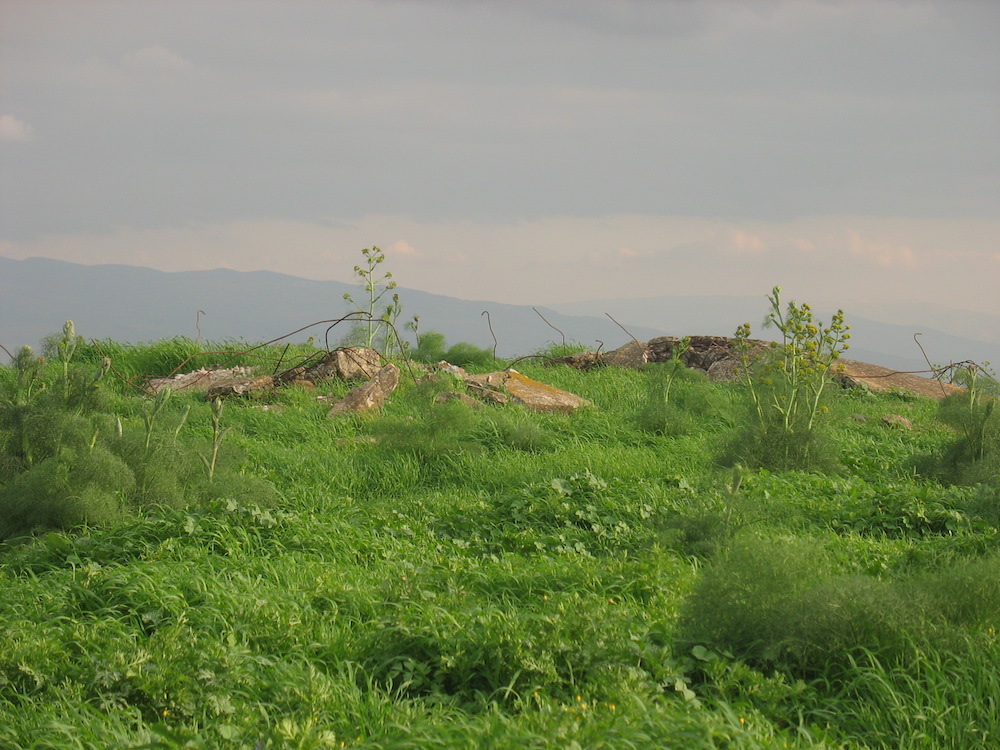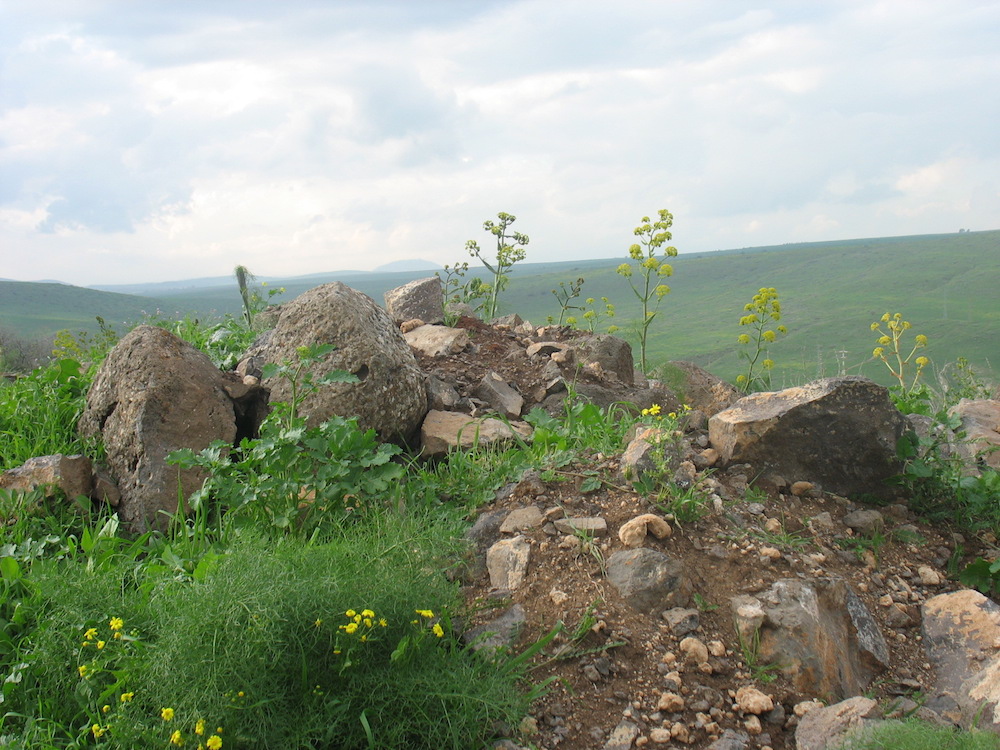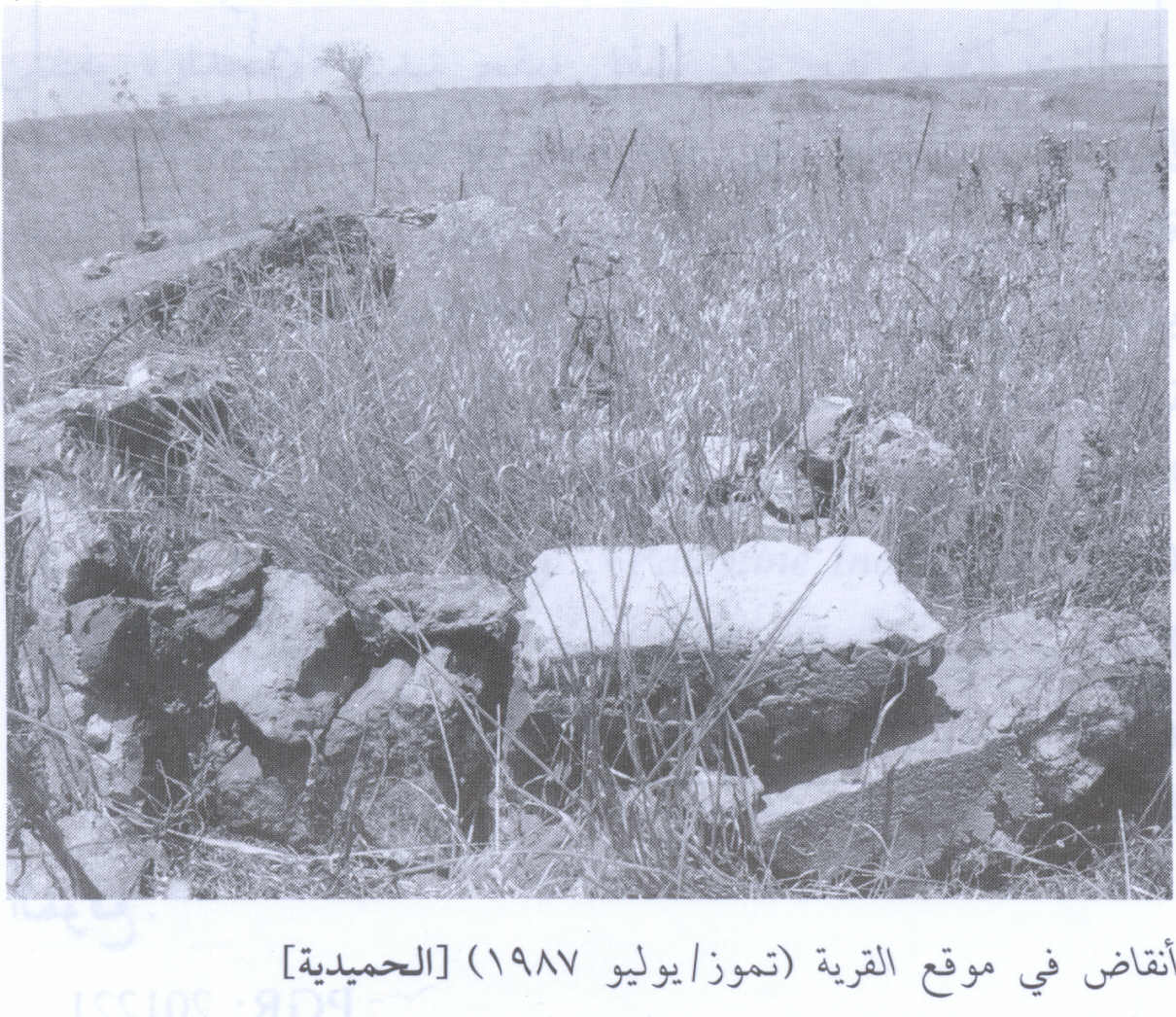Info
District: Baysan
Population 1948: 260
Occupation date: 01/05/1948
Jewish settlements on village/town land before 1948: Irgun Dror (Abandoned)
Jewish settlements on village/town land after 1948: None
Background:
al-Hamidiyya Before 1948
The village stood on a hill overlooking the Baysan Valley to the east, Wadi Yubla to the north, and the lands of the town of Baysan to the south. Its houses were built of adobe brick. During its slow expansion in the first half of this century, newer houses were built of cement along the road that linked it to the nearby villages. The village was classified as a hamlet by the Palestine Index Gazetteer. In the northeastern part of al-Hamidiyya there was a shrine, Maqma Khalid, for a local Muslim saint. Al-Hamidiyya population, which was Muslim, worked primarily agriculture. The village land were planted in grain and various vegetables. In 1944-45 a total of 164 dunums was devoted to citrus and bananas and 4,395 dunum were allotted to cereals; 8 dunums were irrigated or used for orchards.
Occupation and Depopulation
The Golani Brigade successfully attacked Baysan and “cleared” most of the Baysan Valley of its inhabitants in an offensive mounted in the first half of May 1948. Al-Hamidiyya is one of the few villages that had remained. Its people left on 12 May “[u]nder the influence of the exodus from the town of Beisan and under pressure from the Haganah,” according to Israeli historian Benny Morris. He does not specify what kind of pressure was involved. In September, neighboring Zionist settlements applied to the Israeli authorities for permission to demolish the village (as well as three others in the area). It is not clear from Morris` account whether permission was granted or when the destruction was carried out.
Israel Settlements on Village Lands
The settlement of Chermonim, established 2 km south of the village site in 1942, is close to but not on village lands. Its name was charged to Chamadya in 1952 to resemble the Arabic name of al-Hamidiyya more closely.
The Village Today
Aside from the ruins of the village`s houses (which have been reduced to cement ruble), a cemetery, and a few wells, only thorns are found on the site. The land in the vicinity are used by Israelis for agriculture and grazing.
--------------------
Source: al-Khalidi, Walid (ed.). All that remains: the Palestinian villages occupied and depopulated by Israel in 1948. Washington DC: 1992.




